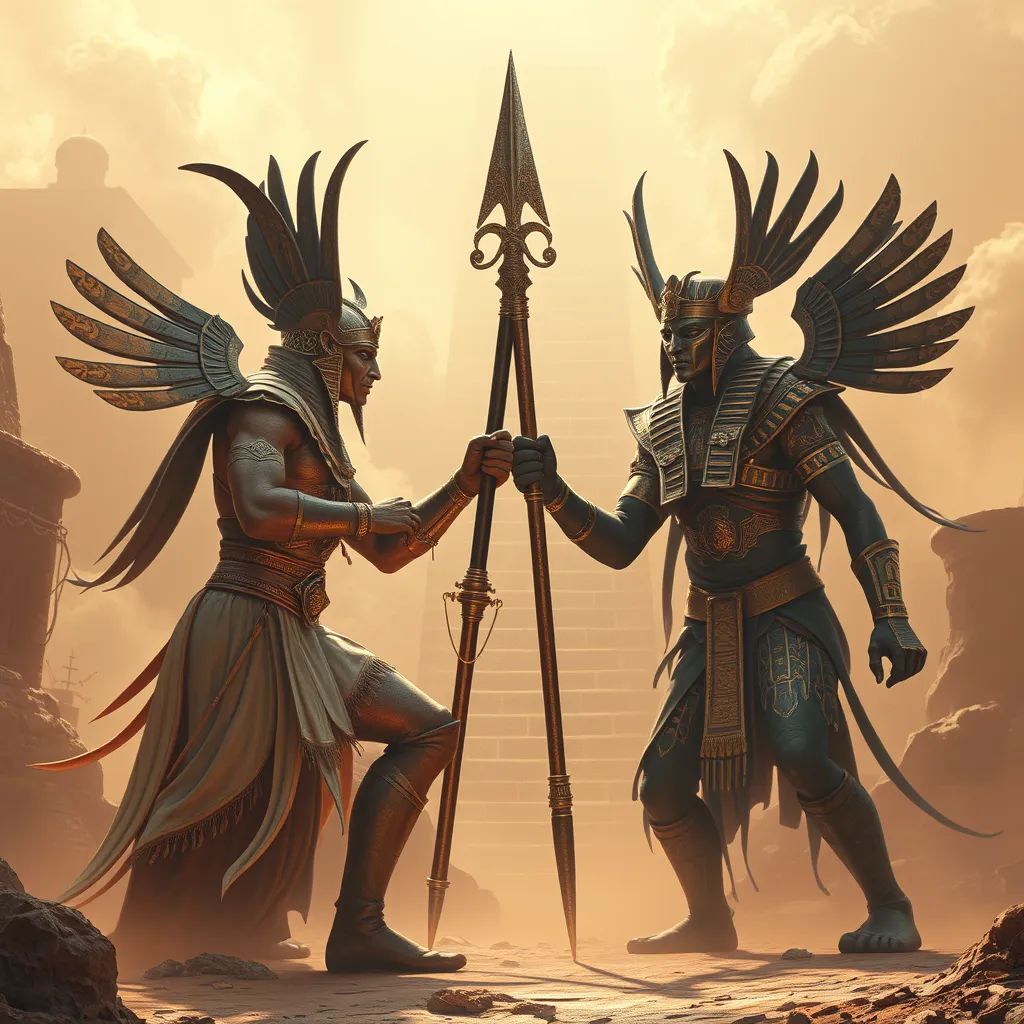The Hidden War: The Battle Between Osiris and Set for the Throne of Egypt
I. Introduction
Egyptian mythology is a rich tapestry of stories, gods, and beliefs that shaped the culture and civilization of ancient Egypt. It provides insights into the values, fears, and aspirations of a society that revered the divine and the natural world. Among the myriad of deities, two figures stand out for their representation of fundamental human experiences: Osiris and Set.
The conflict between Osiris, the god of the afterlife, and Set, the god of chaos, is a central theme in Egyptian mythology. This rivalry not only reflects the duality of existence—life and death, order and chaos—but also serves as a metaphor for the struggles for power and authority within society. This article explores the intricate layers of this myth, its characters, and its significance in the context of ancient Egyptian culture.
II. The Pantheon of Egyptian Gods
The Egyptian pantheon is vast, consisting of numerous gods and goddesses, each with their own unique attributes and domains. Some of the key deities include:
- Ra: The sun god and creator deity.
- Isis: The goddess of magic and motherhood.
- Horus: The god of the sky and kingship.
- Anubis: The god of mummification and the afterlife.
Osiris and Set play crucial roles in this divine hierarchy. Osiris is often depicted as a benevolent figure associated with resurrection and fertility, while Set embodies chaos, storms, and the desert. This duality illustrates the ancient Egyptian belief in balance, where opposing forces coexist and are essential for the universe’s harmony.
III. Osiris: The God of the Afterlife
Osiris is one of the most significant deities in Egyptian mythology, symbolizing resurrection and eternal life. According to myth, he was born to the sky goddess Nut and the earth god Geb, destined to rule over the living and the dead.
As the ruler of the underworld, Osiris presides over the judgment of souls, determining their fate based on their deeds in life. His iconic green skin symbolizes rebirth and regeneration, reflecting his association with agriculture and fertility. Osiris is credited with teaching humanity the art of farming, which was crucial for the survival and prosperity of ancient Egyptians.
IV. Set: The God of Chaos and Desert
In stark contrast to Osiris, Set represents chaos, disorder, and the untamed forces of nature. He is often depicted with a unique animal head, sometimes referred to as the Set animal, which is a blend of various creatures, embodying his unpredictable nature.
Set’s role in the pantheon is complex; while he is associated with chaos, he also has protective qualities, especially in guarding the sun god Ra during his nightly journey through the underworld. Historically, perceptions of Set have varied, with some cultures viewing him as a necessary force for balance, while others saw him as the epitome of evil.
V. The Conflict: Death and Resurrection of Osiris
The pivotal moment in the myth of Osiris and Set occurs with Set’s betrayal. Consumed by jealousy and ambition, Set kills Osiris in a brutal act that symbolizes the triumph of chaos over order. He dismembers Osiris’s body and scatters the pieces across Egypt, signifying the disruption of life and the natural order.
The significance of Osiris’s death cannot be overstated. It represents the cyclical nature of life, death, and rebirth. His wife, Isis, plays a crucial role in his resurrection. With her magic and determination, she searches for the scattered pieces of Osiris and ultimately resurrects him, allowing him to take his place as the ruler of the underworld.
VI. The Aftermath: Set’s Usurpation and Struggle for Power
Following Osiris’s death, Set usurps the throne of Egypt, ruling with an iron fist. His reign is marked by chaos and fear, as he embodies the disorder that ensues in the absence of Osiris’s benevolent rule.
During Set’s rule, Egypt experiences social unrest and disarray. The land, once fertile and prosperous under Osiris’s guidance, suffers. However, the balance of power is not complete; Osiris’s son, Horus, emerges as a rightful contender for the throne, representing the hope for restoration and order.
VII. The Final Confrontation: Horus vs. Set
The conflict escalates as Horus, the son of Osiris, prepares to confront Set. This battle is not just a personal vendetta; it symbolizes the eternal struggle between good and evil, order and chaos. Horus, often depicted as a falcon, embodies the ideals of kingship and justice.
Key battles between Horus and Set include:
- The Battle of the Boats: A contest where they transform their boats into different shapes to outmaneuver each other.
- The Trial of the Gods: A series of challenges set by other gods to determine the rightful ruler.
Ultimately, Horus prevails, restoring order to Egypt and reclaiming his father’s throne. This resolution signifies the restoration of balance, highlighting the importance of justice and rightful rule in society.
VIII. Conclusion
The myth of Osiris and Set endures as a powerful narrative within Egyptian culture, symbolizing the perpetual struggle between good and evil, life and death. It reflects the ancient Egyptians’ understanding of the complexities of the human experience and the natural world.
Through this tale, themes of resurrection, justice, and the cyclical nature of existence resonate, offering lessons that remain relevant today. The Osiris-Set myth serves as a reminder of the delicate balance of power and the consequences of chaos, echoing in contemporary discussions of authority and conflict.




